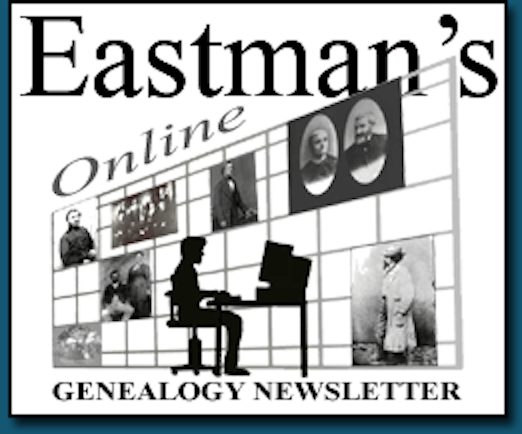...or perhaps a computer that is not so distant
The following is a Plus Edition article written by and copyright by Dick Eastman.
Remote control software for desktop and laptop computers has been available for years. All systems administrators of large data centers are familiar with these programs, as are many "work from home" individuals who need to control computers at the office on nights and weekends. However, the same technology is available to everyone; you do not need to be a systems professional in order to access the computer on your desk at the office or the one at home when you are traveling. Best of all, many of these remote control products are available free of charge.
Remote control software has a very simple goal: add a second monitor, keyboard and mouse to a computer. The difference is that these secondary items are located some distance away from the computer being controlled, perhaps miles or even thousands of miles away. The secondary monitor, keyboard and mouse are connected to a standard Windows, Macintosh or Linux system or, in some cases, are part of an Android or iOS (iPhone, iPad, or iPod Touch) handheld device. That system provides the necessary functionality to connect the video/keyboard/mouse simultaneously to the local and the distant computers.
 Remote control software is very useful. You can use remote control software to access a distant computer in essentially the same way as if you were sitting in front of that system. Another common use is to provide instruction or assistance to a distant student. While the two of you may be many miles apart and are seated in front of different computers, both the student and the teacher see the same things on their screens simultaneously. Either person can type on the keyboard or use the mouse in exactly the same manner as a single user of one computer. Remote control software is perhaps the best tool that a computer instructor or a tech support person can use.
Remote control software is very useful. You can use remote control software to access a distant computer in essentially the same way as if you were sitting in front of that system. Another common use is to provide instruction or assistance to a distant student. While the two of you may be many miles apart and are seated in front of different computers, both the student and the teacher see the same things on their screens simultaneously. Either person can type on the keyboard or use the mouse in exactly the same manner as a single user of one computer. Remote control software is perhaps the best tool that a computer instructor or a tech support person can use.
With remote control software, you can also connect to your home or office system to check your e-mail. You can use a database, word processor, or other program that is installed on your home system but not on your laptop. You can connect to the office to run business applications. You can also send or retrieve files to and from the distant computer. Want to check your genealogy program when traveling? You can do so from many miles away, even if you are using a different operating system.
More than once, I have been in a hotel room with a laptop computer and realized that the very important file that I need is on the desktop computer at home. One time I was about to deliver a presentation at a genealogy convention. I felt that 15 minutes of set-up time would be sufficient. After all, I simply needed to plug in the laptop, connect it to the overhead projector, and load PowerPoint. I thought I could set up in less than five minutes. With only minutes to spare, I went to the podium, performed the first few steps, and loaded PowerPoint. I then panicked when I realized that I had neglected to copy my presentation's PowerPoint slides to the laptop. Here I was 1,000 miles from home, with about five minutes to the scheduled start of my presentation, and I didn't have the slides!
Luckily, the presentation room had wi-fi Internet access. I connected to the Internet, then to my desktop computer at home – 1,000 miles away – retrieved the file, and started my presentation on time. The audience never knew about my near-panic attack. The only clue was the beads of perspiration that remained on my forehead.
Remote control software is often used to manage unattended servers. For example, one company operates a worldwide control center in an office building not far from my home. They use remote control software to manage all their servers. An employee can sit at his desk and remotely perform all required functions, except for pushing power off or power on or placing a disk into the CD-ROM drive. Some of the servers being managed are in the next room while others are in Hong Kong, Malaysia, New Delhi, and the Bahamas. Location makes no difference; all servers are handled in the same unattended manner.
My web server is on a Linux server in Toronto. I sit at home and use a Macintosh to connect to it, using it in the same manner as if I was in Toronto. I can do the same from a hotel room in Scotland or in New Zealand or even from a commuter train by using a laptop computer with a wireless Internet connection.
The same technology is also useful for remote assistance and instruction. More than once I have remotely trained a friend or relative on how to use a particular computer program or web site. Once the remote user gives permission, I can connect to his or her computer and "take over" the mouse and keyboard as we both watch the same display on our two computer screens. I can troubleshoot problems and teach the other person how to use some functionality. This is especially useful when the remote user is not computer-literate. Do you need to train someone on how to use a program or a web site? It makes no difference if the other person is across town or in Australia: the process is easy and very effective.
Remote control software is available for Windows, Macintosh, UNIX, Linux, Apple's iOS, and Android. In fact, such software is already included with Macintosh OS as well as with Windows Pro. However, programs from other producers often add extra functionality not found in Microsoft's Remote Desktop or in Apple's Remote Desktop programs. Many of these third-party programs also work well on Windows Standard Edition.
Some of today's remote control software is cross-platform compatible. That is, you can control a remote Windows computer while you are using a Macintosh or vice versa. I even control a remote Macintosh from my Android tablet. Not all of the programs available today offer cross-platform functionality, however. If that feature is important to you, read the documentation carefully before committing to a remote control program.
The remainder of this article is reserved for Plus Edition subscribers only. If you have a Plus Edition subscription, you may read the full article at: https://eogn.com/(*)-Plus-Edition-News-Articles/13234412
If you are not yet a Plus Edition subscriber, you can learn more about such subscriptions and even upgrade to a Plus Edition subscription immediately at https://eogn.com/page-18077.
 Latest News Articles
Latest News Articles Do you have an RSS newsreader? You may prefer to use this newsletter's RSS feed at:
Do you have an RSS newsreader? You may prefer to use this newsletter's RSS feed at: